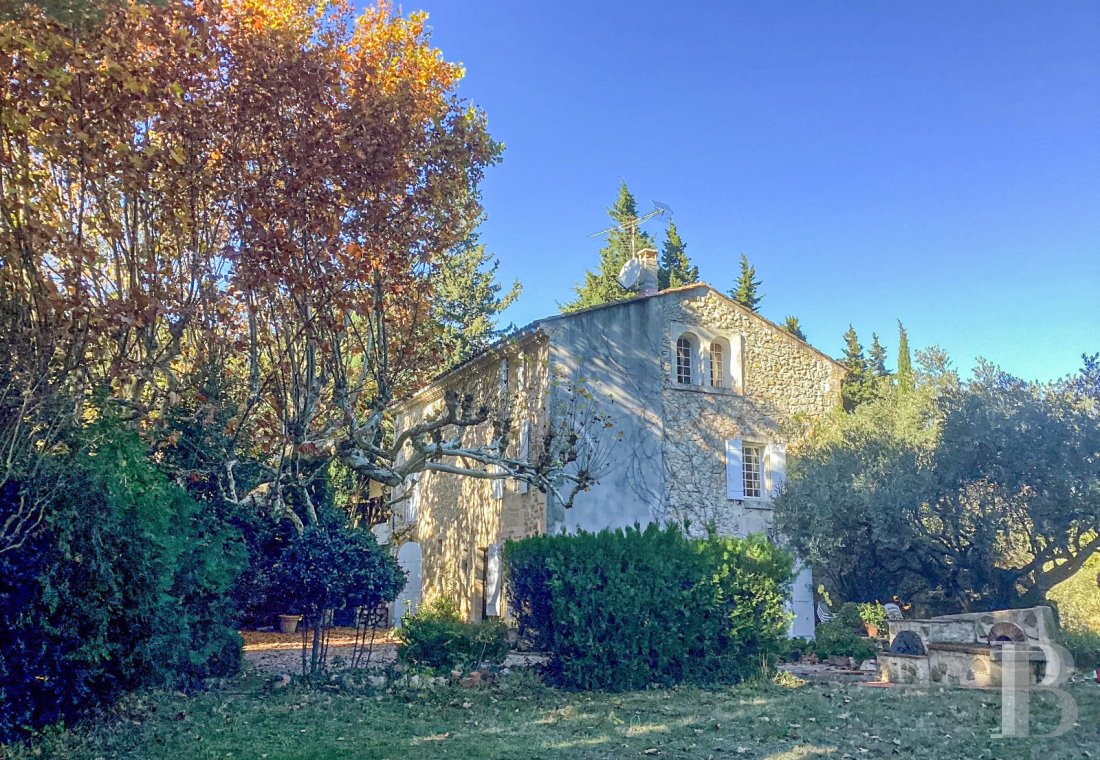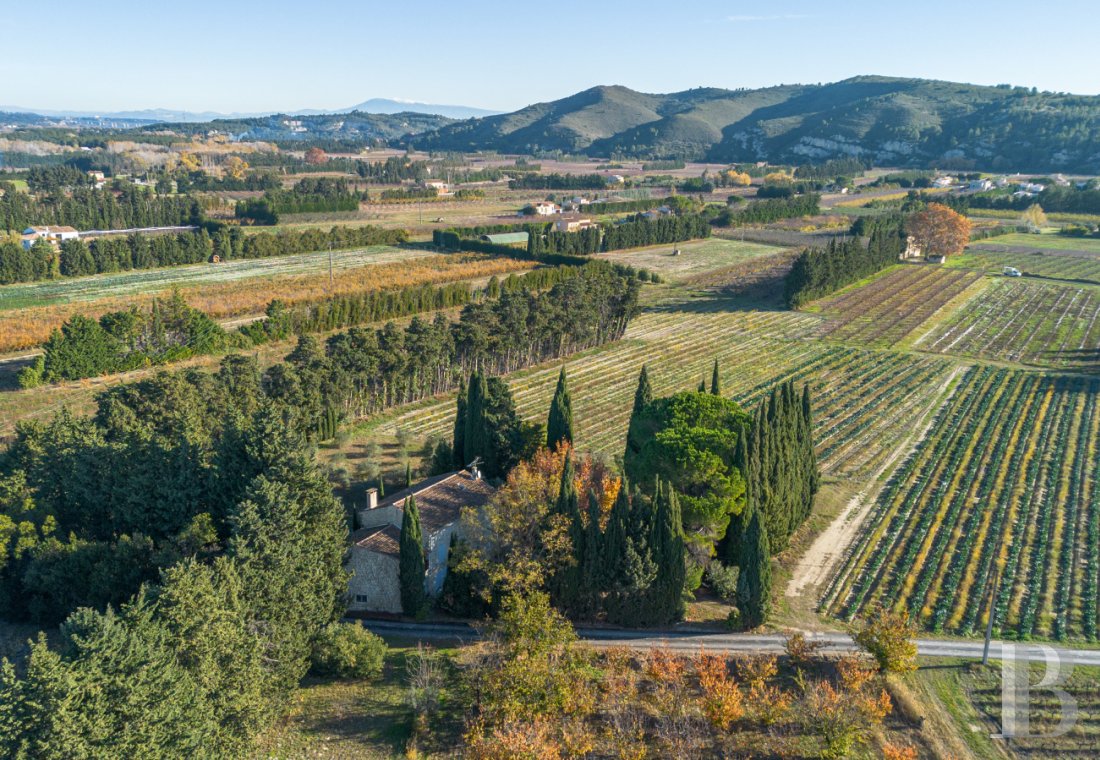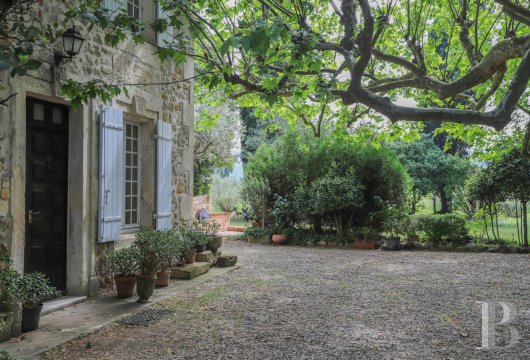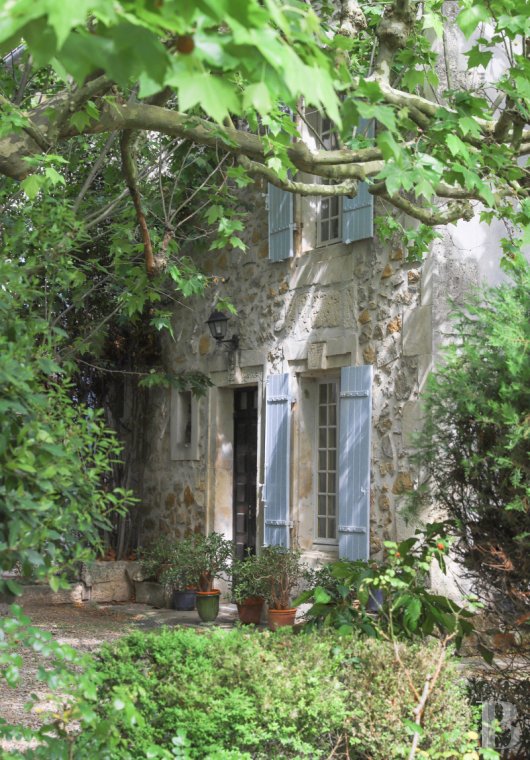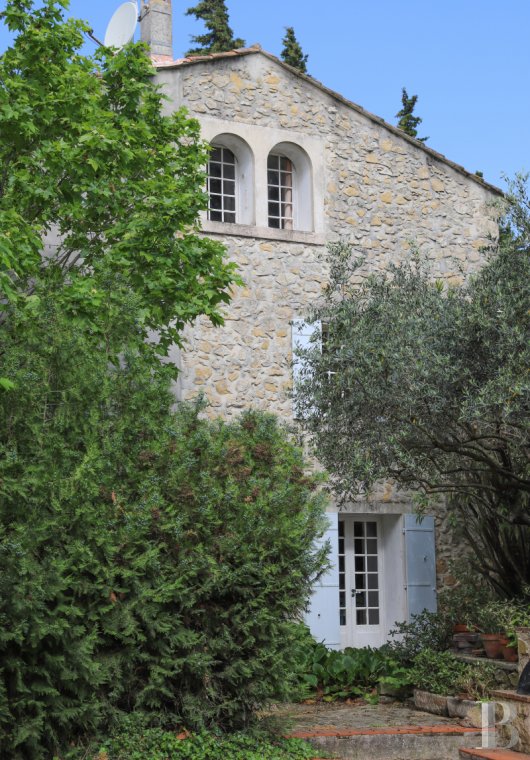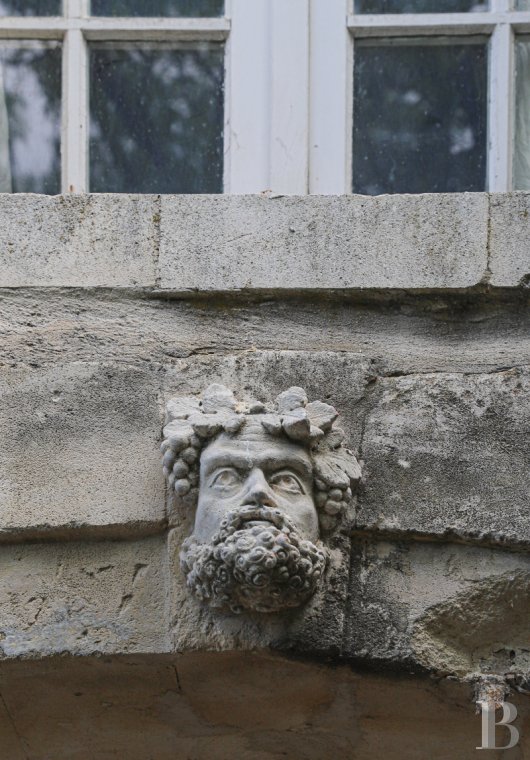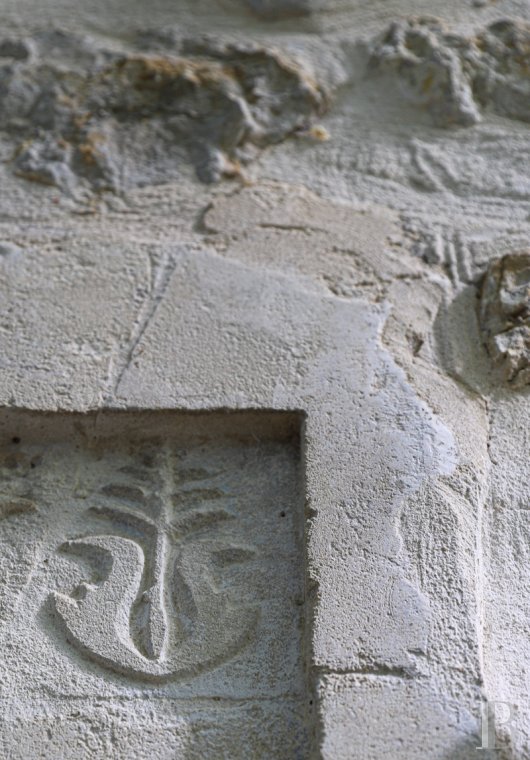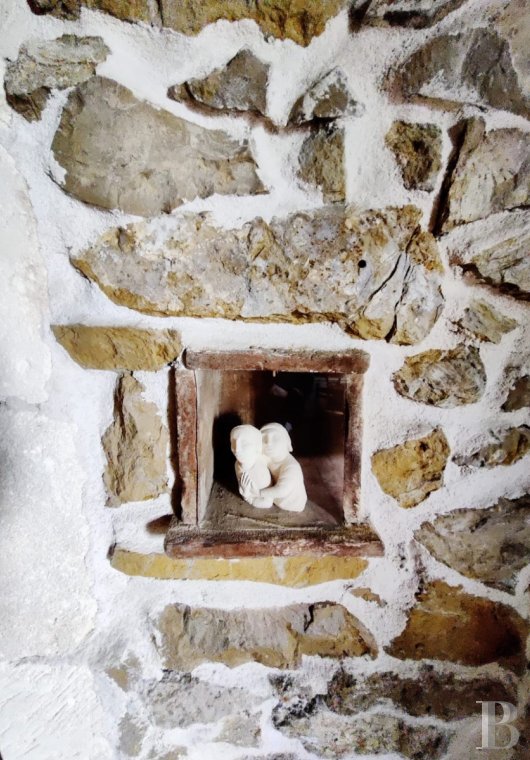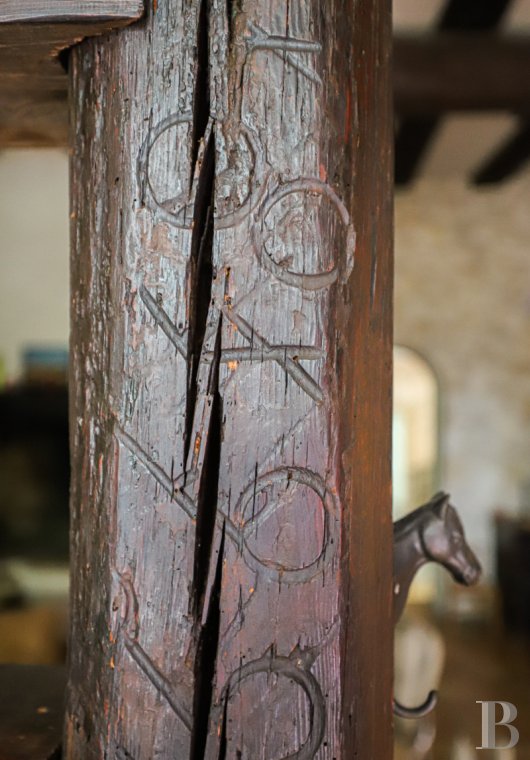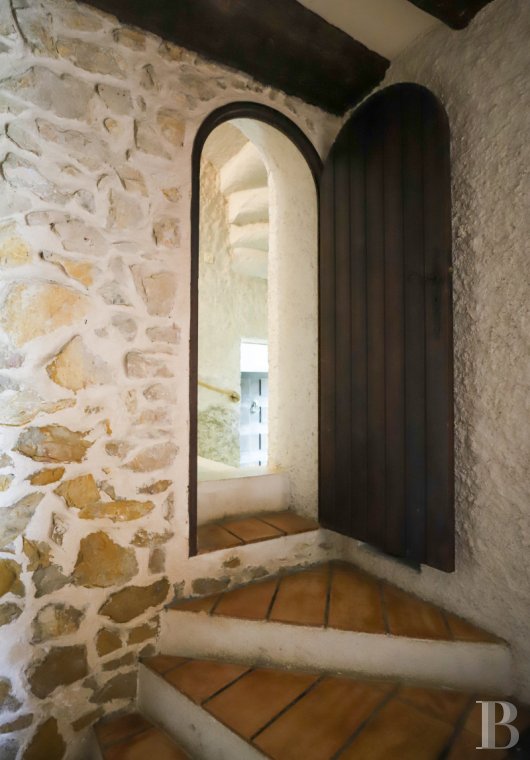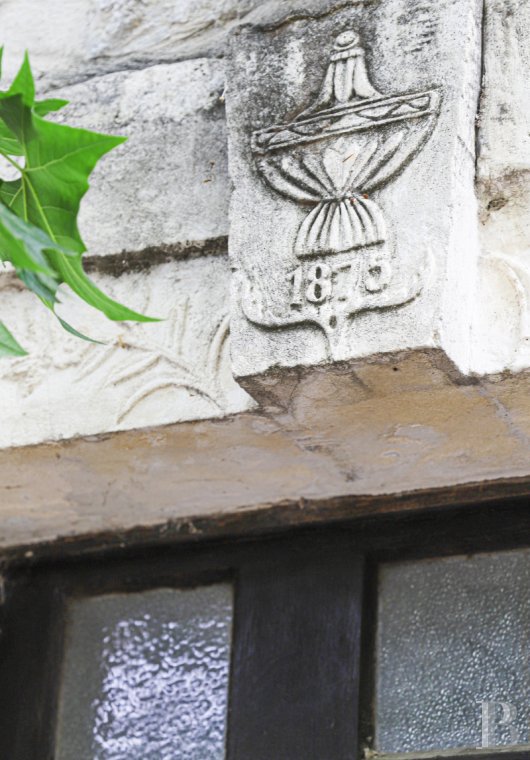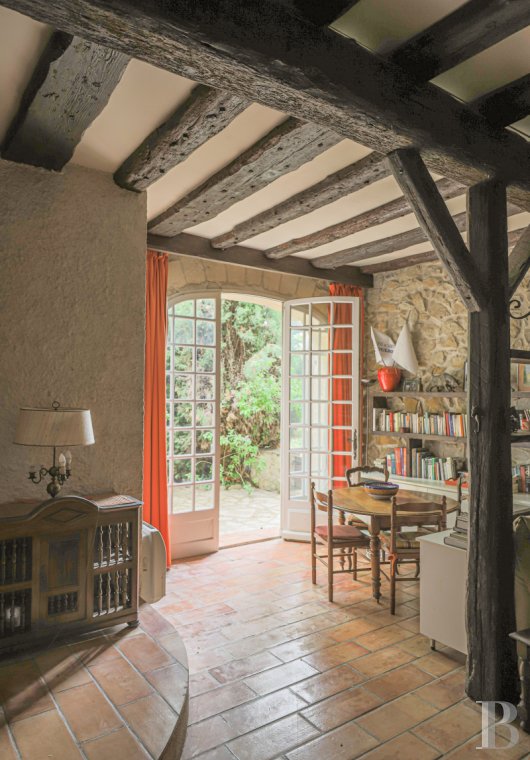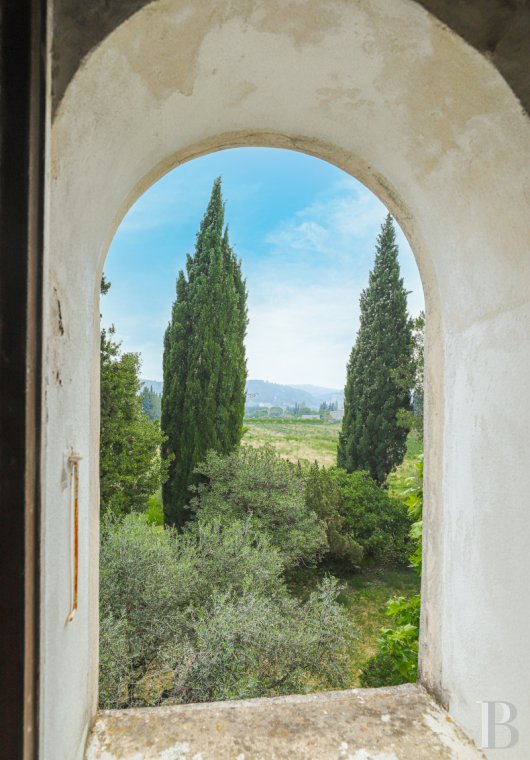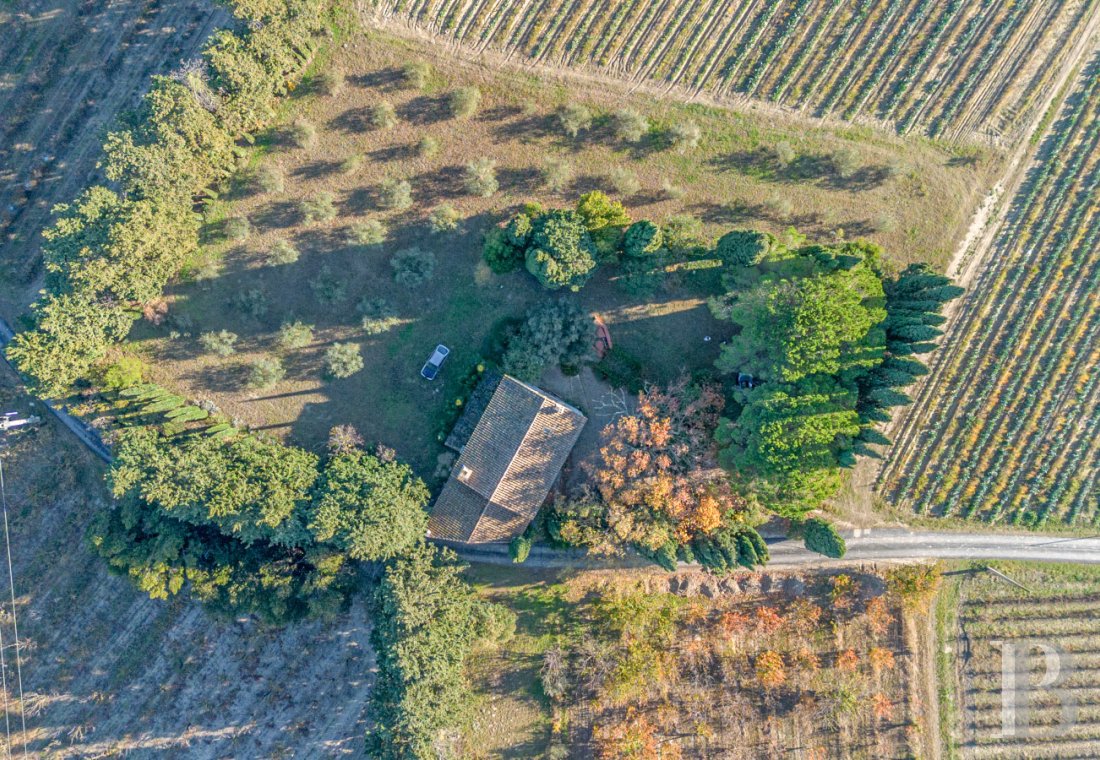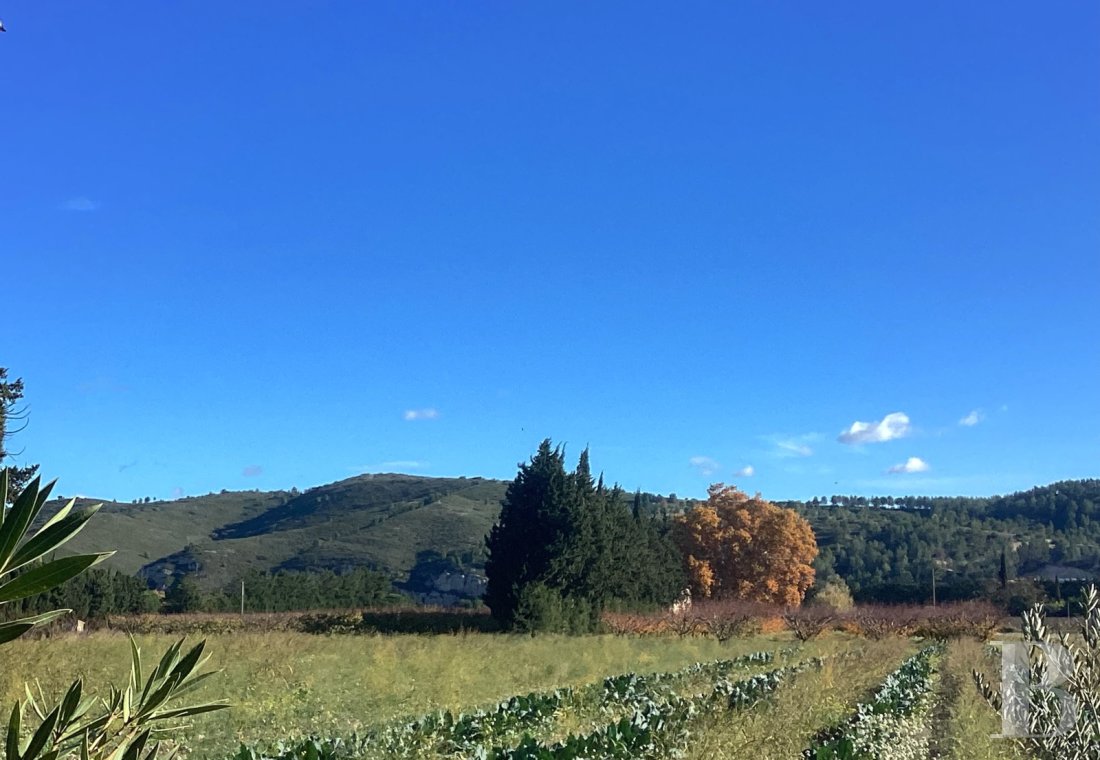Location
The property is surrounded by fruit trees and protected by an olive grove bordering a large shady garden. Facing the thousand-year-old village of Boulbon, it nestles in a fold of the Montagnette hills culminating in the Rochers de Raous, to the west of the abbey of Saint-Michel de Frigolet.
A rural parish since the Middle Ages, Boulbon is one of the least densely populated municipalities in France, consisting mainly of forests and orchards. This is undoubtedly why it was chosen by artists and media celebrities as a favourite haunt, famous for its gentle way of life and timeless beauty.
Only a 10-minute drive from Avignon TGV station - without having to cross the papal city - 30 minutes from Arles, 60 minutes from Marseille, Montpellier and Nîmes airports.
Description
On the garden side, the elegant facade, built of opus incertum with rough-cut stones bonded with white mortar, bears the date 1875.
Facing south/south-east, it features tall windows and large glass doors, highly unusual in Provence architecture, which generally favours small openings to provide better protection from the heat.
Carved ornaments with mascaron, cornucopia and antique head motifs above the door frames probably bear witness to the time when a local dignitary lived here, as if to underline the nobility of this farmhouse of rural origin. A sundial adorns the corner of the south-east wall. A vast, empty hayloft adjoining the main building has a carriage door opening onto the countryside, providing further evidence of the building's rural past.
The interior of the farmhouse is very rustic, with Ardèche chestnut beams showing branding marks from being floated down the Rhône, preserving the quaint atmosphere of the country homes of yesteryear. The interior masonry walls, often exposed, of the same type of "cyclopean" massive stonework as on the outside, feature recesses designed to house votive statuettes.
All the windows and doors open onto a garden of biblical species: pomegranate, olive, cypress, fig and myrtle trees. The discreetly shaped openings in the foliage offer views of the poetic Montagnette landscape, south of the Alpilles hills.
The "mas" (farmhouse)
The south-facing farmhouse has a total living area of 289m² and 60m² of convertible space. The main facade is two storeys high, with evenly spaced windows flanked by shutters.
On the ground floor, the small-paned windows on either side of the entrance door enhance the elegant overall appearance of the property.
The first floor of the south side features two identical, symmetrical windows with shutters. To the east, two arched windows surrounded by massive stone overlook the medieval castle and the village.
The second floor, consisting of a rustic attic and its roofspace, has been turned into a highly bohemian artist's studio. An adjoining unconverted barn, with its typically rural appearance, opens onto both the courtyard and the fields.
The ground floor
On the south side, the solid carved oak entrance door leads into a vast entrance hall, serving to the right the kitchen, pantry and storeroom. The kitchen opens onto the garden through an east-facing French window, affording a unique panoramic view of the Montagnette hills. To the left of the entrance hall is the sitting room with two walls of massive stone. It is accessed via a forked staircase with five steps, which continues to the upper floors. The hayloft next to the farmhouse on the west side, which currently serves as a garage, offers a wide range of possible uses.
The first floor
The Barbentane stone staircase, with whitewashed roughcast walls, leads to a corridor with two bedrooms and a shower room. The first bedroom faces east, with a view of the Château de Boulbon; the second, to the south, benefits from the shade of the plane tree. An attic with an impressive timber frame, around 8 m high, used partly as a wardrobe, awaits future conversion. Next to the attic, a third bedroom, a refuge for the unrepentant loner, is nestled in the roofspace with a Roman terrace facing the south-west, just above the hayloft. The three bedrooms share a single bathroom.
The second floor
The staircase leads to what is in fact a section of the attic in which a vast artist's studio has been created. Facing south, it offers a view over the surrounding countryside. The room was probably intended as a last refuge for farmers in the 19th century, when they had to cope with the terrible floods of the Rhône, which have since been successfully mitigated thanks to major civil engineering works carried out in the 20th century.
Our opinion
The poetic, rural atmosphere of this modest haven away from the hubbub of the world is perfect for anyone looking for a little respite from the stresses and strains of everyday life. There is the possibility of acquiring over 3 hectares of additional land, which could be planted with olive trees, guaranteeing a small olive production. There is no swimming pool, but it would be an option. For those seeking a rustic atmosphere, this farmhouse can be moved into immediately, offering unforgettable moments of bohemian living. For others, some work needs to be planned and carried out. Boulbon village, with its shops, school and healthcare facilities, is a welcome respite from isolation. The cultural offerings of Avignon and Arles, just a stone's throw away, do the rest, the most precious aspect being the dialogue with nature and peace rediscovered.
1 175 000 €
Fees at the Vendor’s expense
Reference 465606
| Land registry surface area | 5000 m² |
| Main building floor area | 289 m² |
| Number of bedrooms | 4 |
| Outbuildings floor area | 127.26 m² |
French Energy Performance Diagnosis
NB: The above information is not only the result of our visit to the property; it is also based on information provided by the current owner. It is by no means comprehensive or strictly accurate especially where surface areas and construction dates are concerned. We cannot, therefore, be held liable for any misrepresentation.


